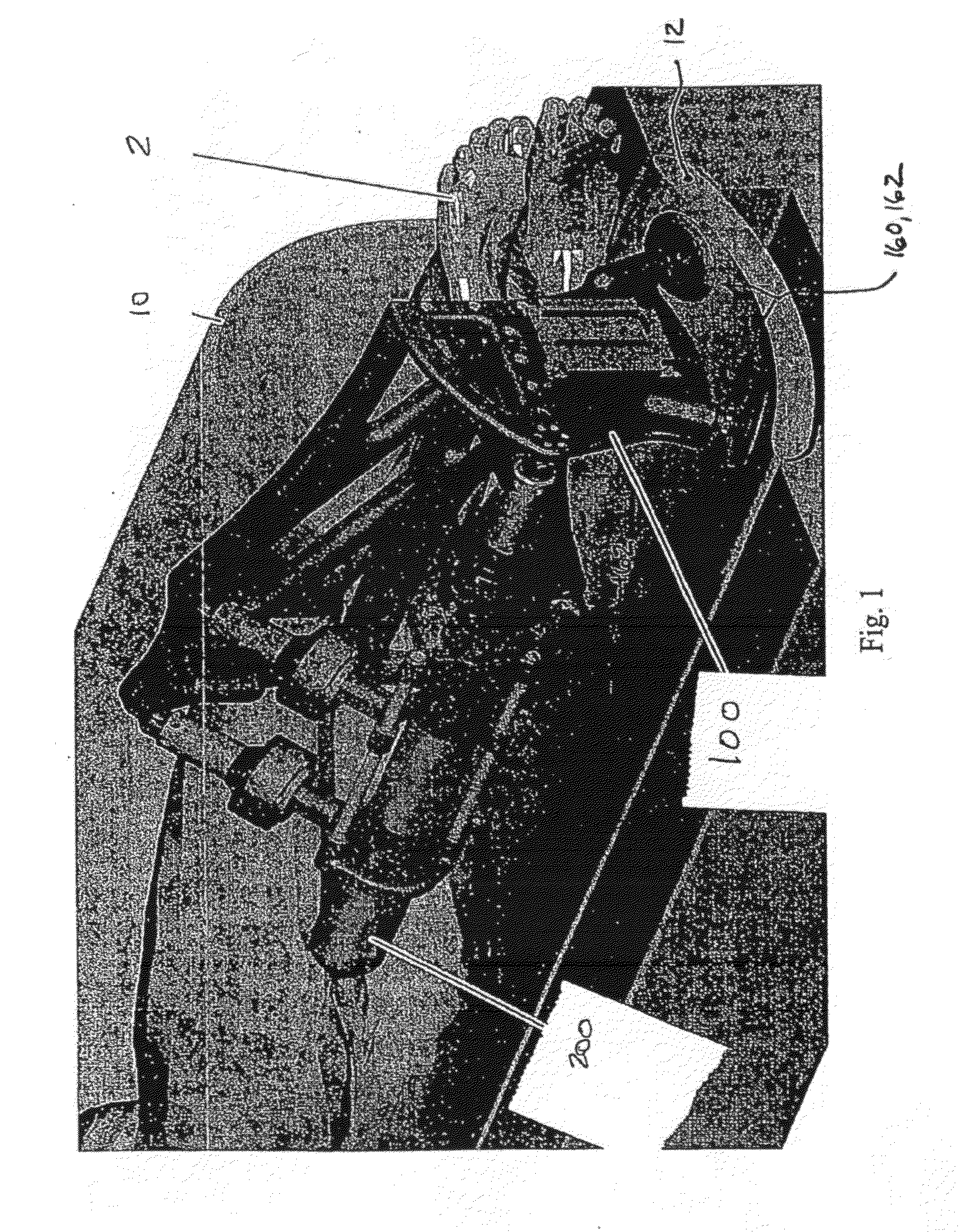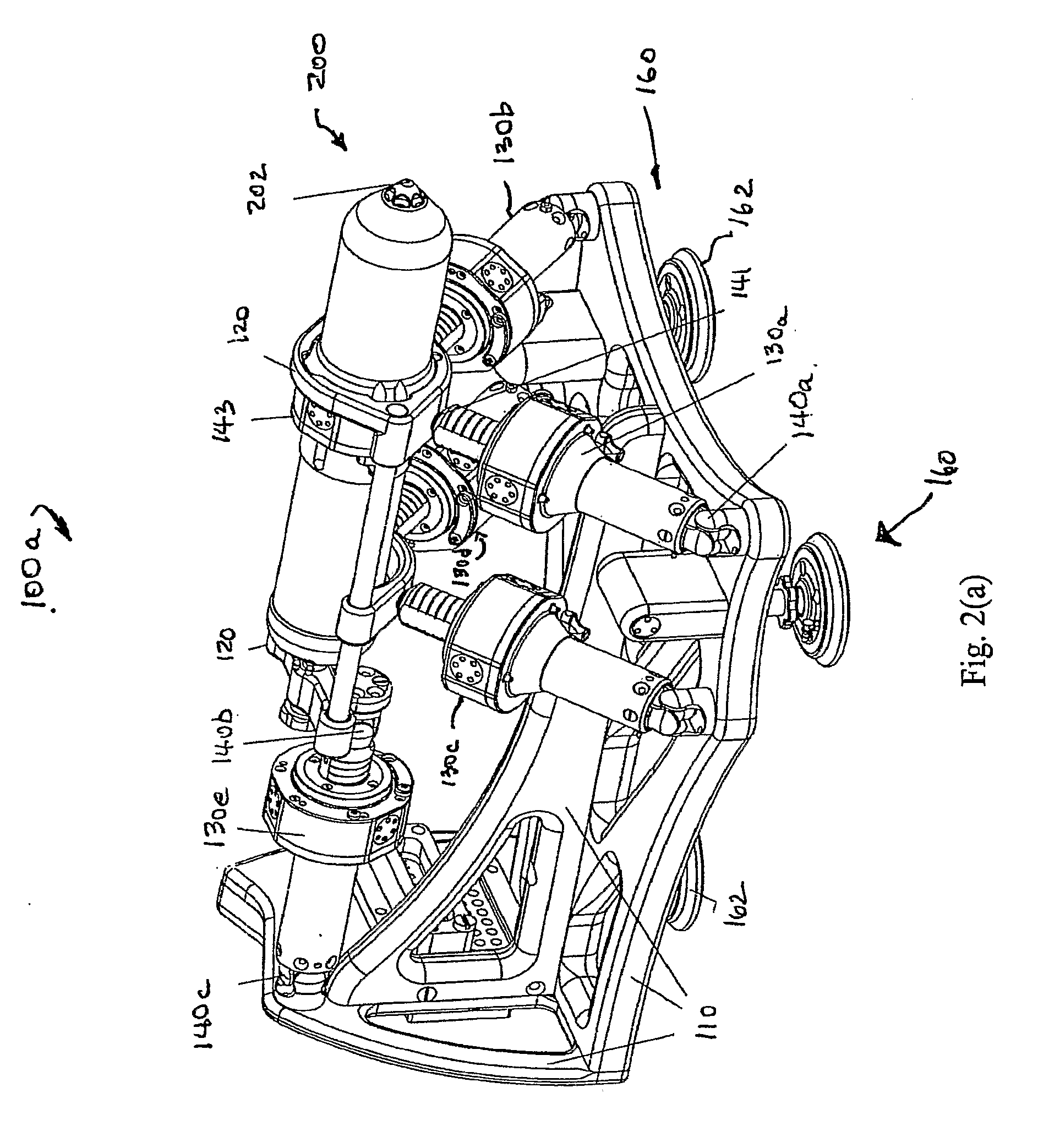Multi-imager compatible robot for image-guided interventions and fully automated brachytherapy seed
- Summary
- Abstract
- Description
- Claims
- Application Information
AI Technical Summary
Benefits of technology
Problems solved by technology
Method used
Image
Examples
Embodiment Construction
[0068]The present invention features a robot, a robotic system, needle delivery apparatus that can be used with such a robot as well as methods and devices related thereto. In more particular aspects, such a robot generally includes a modular system structure that can be adapted for use with any of number of intervention specific medical devices such as intervention specific needle injectors. Such medical devices include, but are not limited to various end-effectors for different percutaneous interventions such as biopsy, serum injections, or brachytherapy. As also described herein, in particular embodiments such an end-effector is a fully-automated low dose radiation seed brachytherapy injector. Additionally, the present invention includes an automated seed magazine for delivering seeds to such a seed brachytherapy injector. Thus, in an all inclusive aspect, a robotic system of the present invention includes all of the foregoing features.
[0069]Such a robot also is particularly adap...
PUM
 Login to View More
Login to View More Abstract
Description
Claims
Application Information
 Login to View More
Login to View More - R&D
- Intellectual Property
- Life Sciences
- Materials
- Tech Scout
- Unparalleled Data Quality
- Higher Quality Content
- 60% Fewer Hallucinations
Browse by: Latest US Patents, China's latest patents, Technical Efficacy Thesaurus, Application Domain, Technology Topic, Popular Technical Reports.
© 2025 PatSnap. All rights reserved.Legal|Privacy policy|Modern Slavery Act Transparency Statement|Sitemap|About US| Contact US: help@patsnap.com



